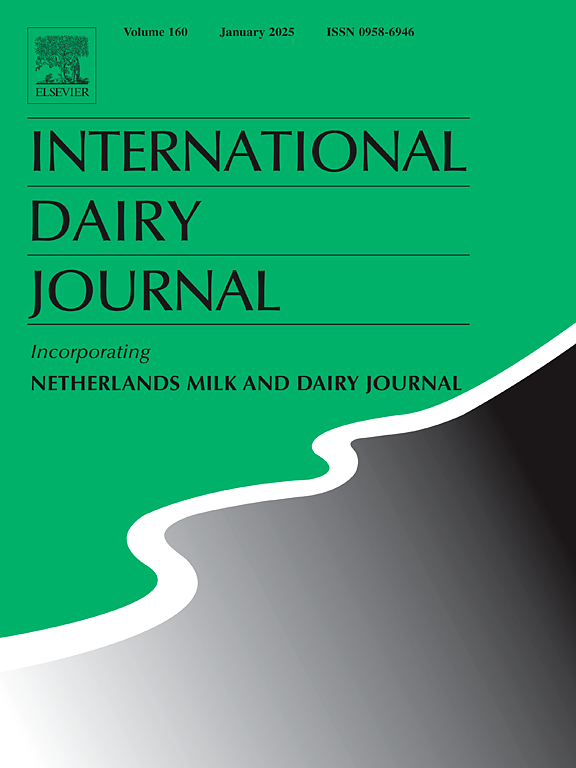Antibiotic resistance of Staphylococcus aureus isolated from the milk of a cow with mastitis in selected countries of the Europe, Western Balkans, Asia and Africa
IF 3.4
3区 农林科学
Q2 FOOD SCIENCE & TECHNOLOGY
引用次数: 0
Abstract
Clinical, subclinical and chronic staphylococcal mastitis of cattle is a frequent phenomenon on farms. The skin of the udder and the environment are not sterile, which is why it is important to maintain high hygiene standards in the production of milk and milk products, in order to prevent the transmission of pathogens into drinking milk and milk products. Laboratory detection of the causative agent of mastitis is important in order to detect the disease and prevent food poisoning in consumers. In contrast to subclinical, clinically manifest mastitis, it is often treated empirically. Such practices lead to the spread of antibiotic resistance. The purpose of the study was to investigate the prevalence of antibiotic resistance of Staphylococcus aureus, the presence of MRSA and the mecA gene in isolates from the dairy sector in many regions in order to pay attention in time to the current prevalence and prevent the spread of resistant bacterial isolates to animals and humans. Prevention of bovine mastitis requires finding effective vaccines, effective antibiotic therapy, rationalizing antibiotic consumption, as well as finding new antibiotics and new alternative means of treatment.
在欧洲、西巴尔干、亚洲和非洲的某些国家,从患有乳腺炎的奶牛的牛奶中分离出的金黄色葡萄球菌的抗生素耐药性
牛的临床、亚临床和慢性葡萄球菌性乳腺炎是农场常见的现象。乳房的皮肤和环境不是无菌的,这就是为什么在牛奶和奶制品的生产中保持高卫生标准很重要,以防止病原体传播到饮用牛奶和奶制品中。乳腺炎病原体的实验室检测对于发现疾病和防止消费者食物中毒非常重要。与亚临床、临床表现的乳腺炎相反,它通常是经验性的治疗。这种做法导致抗生素耐药性的蔓延。本研究的目的是调查多个地区乳制品分离物中金黄色葡萄球菌的耐药性流行情况、MRSA和mecA基因的存在情况,以便及时关注目前的流行情况,防止耐药菌分离物向动物和人类传播。预防牛乳腺炎需要找到有效的疫苗、有效的抗生素治疗、合理使用抗生素,以及找到新的抗生素和新的替代治疗手段。
本文章由计算机程序翻译,如有差异,请以英文原文为准。
求助全文
约1分钟内获得全文
求助全文
来源期刊

International Dairy Journal
工程技术-食品科技
CiteScore
6.50
自引率
9.70%
发文量
200
审稿时长
49 days
期刊介绍:
The International Dairy Journal publishes significant advancements in dairy science and technology in the form of research articles and critical reviews that are of relevance to the broader international dairy community. Within this scope, research on the science and technology of milk and dairy products and the nutritional and health aspects of dairy foods are included; the journal pays particular attention to applied research and its interface with the dairy industry.
The journal''s coverage includes the following, where directly applicable to dairy science and technology:
• Chemistry and physico-chemical properties of milk constituents
• Microbiology, food safety, enzymology, biotechnology
• Processing and engineering
• Emulsion science, food structure, and texture
• Raw material quality and effect on relevant products
• Flavour and off-flavour development
• Technological functionality and applications of dairy ingredients
• Sensory and consumer sciences
• Nutrition and substantiation of human health implications of milk components or dairy products
International Dairy Journal does not publish papers related to milk production, animal health and other aspects of on-farm milk production unless there is a clear relationship to dairy technology, human health or final product quality.
 求助内容:
求助内容: 应助结果提醒方式:
应助结果提醒方式:


